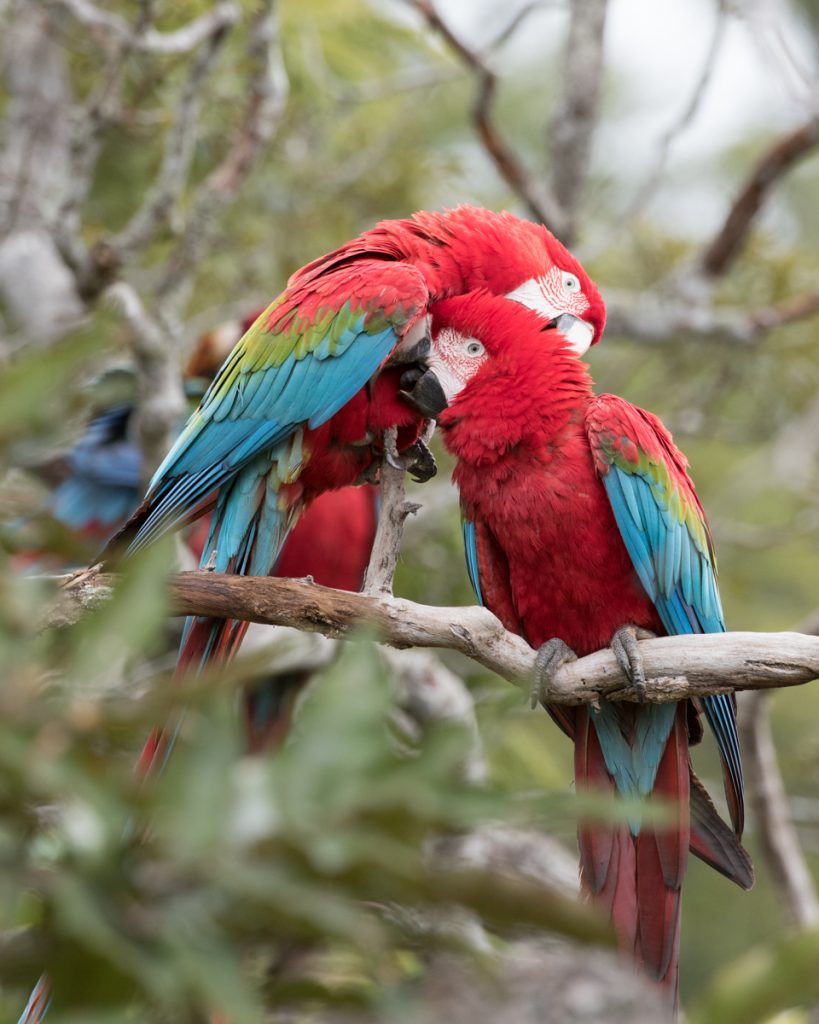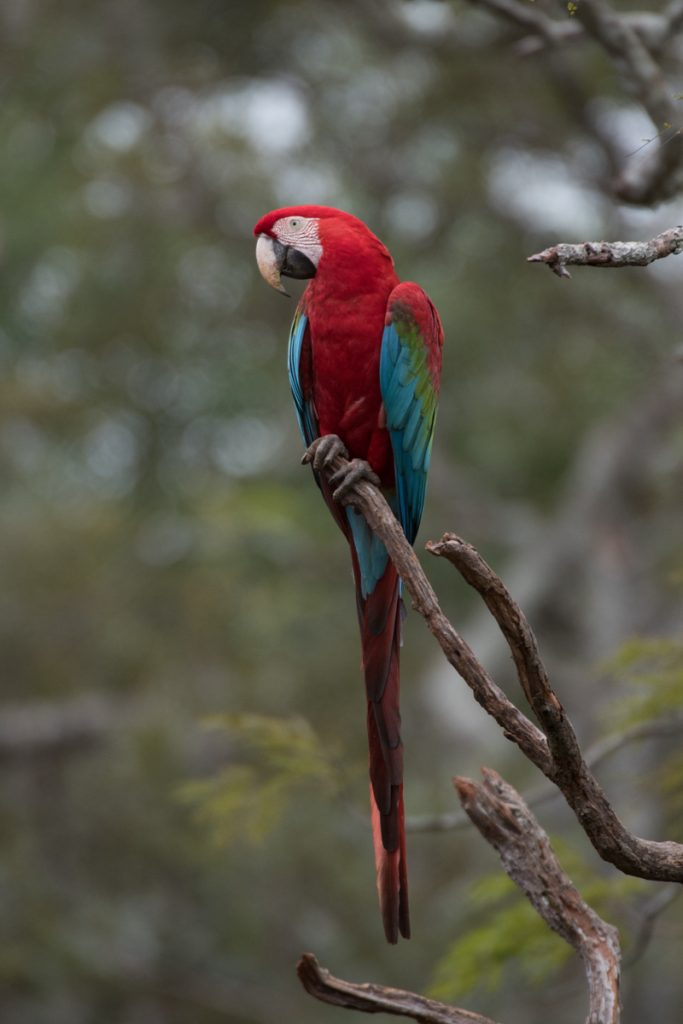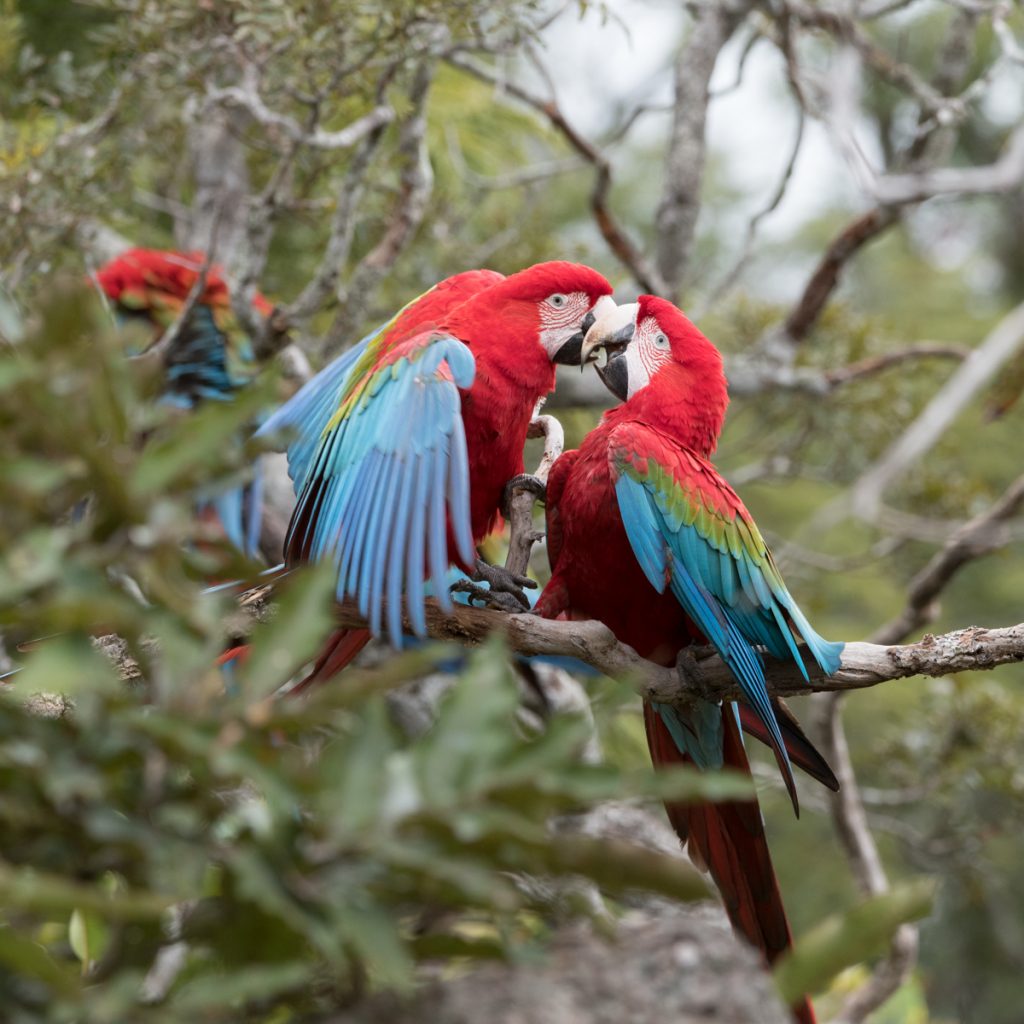
Red and Green macaws are amongst the most beautiful of birds, flamboyant striking red on their chests and a spectrum of beautiful blue’s on top of the wings along with an iridescent band of green. It is the second largest parrot after the hyacinth macaw, they are highly intelligent, social, communicative, highly prized in the pet trade and highly priced. Along with habitat loss due to cattle ranching is where our story at Buraco das Araras in the Cerrado, Mato Grosso do Sul in Brazil begins.

Macaws nest in soft sand stone cliffs, burrowing holes using their amazingly strong beaks and in trees in lowland tropical forest and the Cerrado, a huge area of tropical Savannah in Brazil. The sand stone cliffs allow large congregations of birds to live in close proximity, creating an amazing spectacle as the birds fly in unison, creating a visual feast of colour and a fabulous orchestra of calls to compliment their aerobatics. The conditions allowing these large congregations of birds living together on the cliffs are rare and unfortunately create an easy target for poachers. One such example is a huge geological feature near the town of Bonito in Brazil called a doline or a sinkhole. Bonito translates as beautiful in Portuguese and it is a very beautiful area full of crystal clear rivers brimming with fish and impressive caves due to the limestone found in the region. A doline is created when the roof of an underground cavern collapses creating a crater like structure. When the roof of the cavern collapsed in Bonito it created sandstone cliffs 127m high and approximately 500m across. It is regarded to be the second largest sinkhole in the world and the largest in South America, creating a paradise for birds and other animals who have taken up residency.

The doline at Buraco Das Araras contains lush tropical forest and a large pool with caimans, it is unknown how the caimans got there and what they survive on, although during the early days of ranching where ownership of land relied on might rather than right, more than a few ranchers ended up at the bottom of the sinkhole. It was also a favourite place for mobsters to dispose of bodies and locals their old cars. Add to this macho locals who had a penchant for throwing dynamite sticks down the cliffs and it gives you an idea what state the area was in. There were so many bodies at the bottom of the sinkhole that the army was called in to clear away the vehicles and bodies allowing the owner Mr Modesto Sampaio to begin his restoration of the area and begin his conservation work with the macaws.

When his work began there were no wild macaws left living on the cliffs of the sinkhole and he used his own pet red and green macaw along with a donated bird called Lauro and Lara which he released to attract other wild macaws back to the area. Initially this was a success and they attracted a wild pair of macaws. Soon after they all left, eventually returning with many more red and green macaws. Since that time many more wild macaws have been successfully raised and new birds have arrived, creating a vibrant and successful community. The key to protecting species such as the red and green macaws seems to me to come down to individuals in the community taking responsibility to protect and preserve what they have for future generations. These individuals put profit and gain below their love of the natural world and act as a catalyst and magnet to initiate change and bring together people who care and who can make a difference.
Buraco das Araras is now an established wildlife sanctuary attracting thousands of visitors each year and with the help of macaw monitoring programmes and local universities, it stands as a beacon to inspire others as an example of what can be achieved with the right amount of determination, trust and positivity. Mr Modesto explains it as a combination of passion, patience and love. To give you an idea of the scale of the work involved, it took 20 years just for the vegetation in the region to grow back, there was much hard work he explains! He is proud to have visitors from around the world, proud of the people he employs and happy he can share with other people what he has done and what can be achieved.

I feel compassion is a virtue that needs to be encouraged in our world at the moment, for me Mr Modesto is inspirational in this regard and he rightly should be proud of what he has achieved. As he explains it is not all about money. His story like many others is inspirational and we should take his example and apply it where we can in our communities, his story is worthy of sharing with others and if you are able visit Buraco das Araras in Bonito. As the place name translates, it is a truly beautiful place, even a piece of heaven on earth and thanks to the efforts of Mr Modesto Sampaio it will continue to thrive for nature and people into the future.










